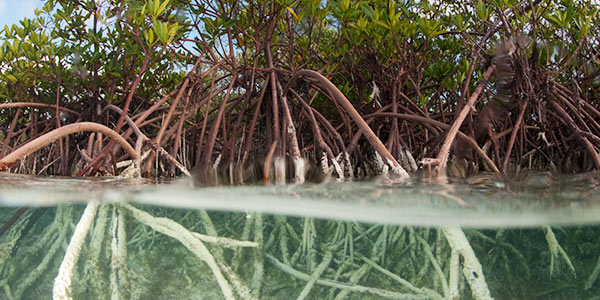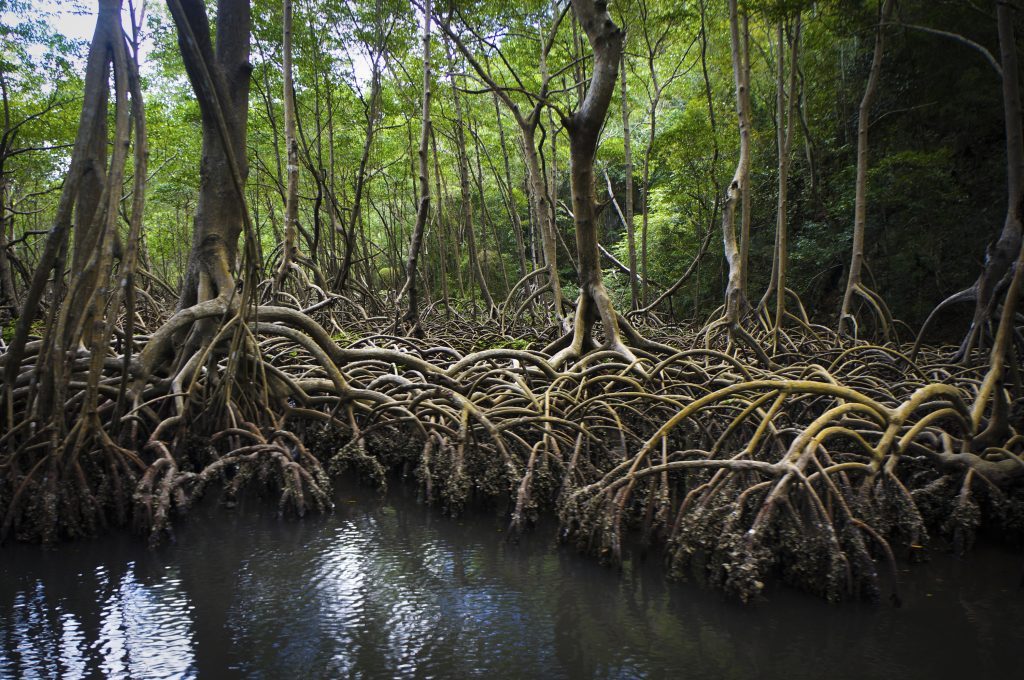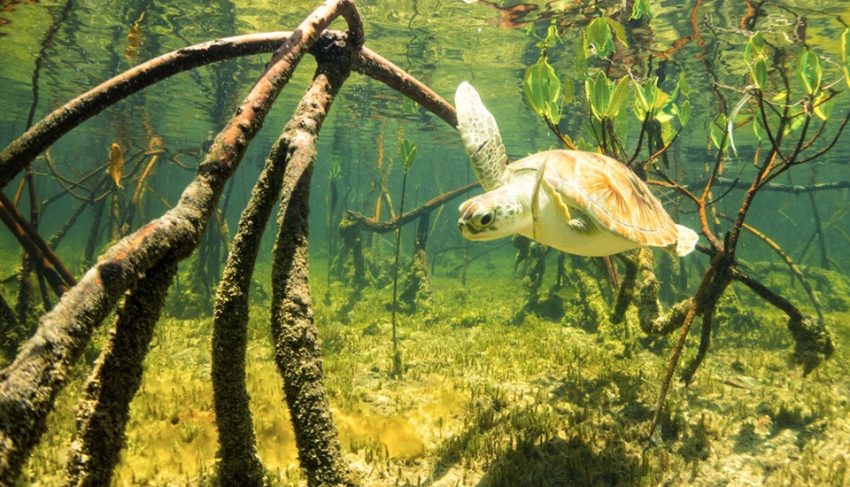Have you ever noticed those average height trees growing on the seashore? Those are mangroves, grown there to protect the sea level from rising. Found in mostly tropical and semi-tropical countries, these shrubs or small trees grow in coastal saline or brackish water. These trees are salt-tolerant trees and are adapted to live in harsh coastal conditions. Mangroves are indigenous species with approximately 70 identified species worldwide, they are a major contributor to the littoral and marine environments. One specialty of mangrove is that it can grow where no other tree grows as well as it has the capacity to limit high-energy wave erosion to events such as storm surges and tsunamis. In 2004, most islands were spared because of mangroves’ growth around their coastlines.

Do Mangroves Protect Against Sea Level?
There are many advantages to having a mangrove forest. Mangroves are very important to the ecosystems as it provides numerous good and services both to the marine environment and people. Below are listed some reasons why mangroves are important:
- Diverse ecology – the silted roots of the mangroves serve as a habitat for array plants and animals to live in.
- Shoreline control – the deep-rooted mangroves help to keep the soil of the coastline in place while preventing erosion. It preserves the natural shoreline without the need for artificial barriers such as seawalls. The roots help soften the blow of the waves which protects any man-made or natural structures.
- Biodiversity- 80% of the global fish catch relies on mangrove forests either directly or indirectly.
- Livelihoods – fishers and farmers depend on the natural environment to provide their families with fish and other seafood daily.
- Plant product – The wood from mangroves are resistant to rot and insects, making it extremely valuable. Many coastal and indigenous communities rely on this wood for construction material and fuel. There are also communities that collect medicinal plants from mangroves ecosystems and use the leaves as animal fodder. The wood is now harvested for pulp, wood chip, and charcoal production.
- Coastal protection – mangroves help stabilizes the coastline and prevents erosion from waves and storms. The mangrove forests protect coral reefs and sea-grass meadows from being smothered in sediment.

How Are Mangroves a Curse?
Though mangroves are mostly a boon for the ecosystem, it has proven to be a curse in some cases:
- Mangroves spread quickly and if not controlled it can congest waterways.
- There can invasive species as it can take over the nutrients of the natural plants.
- Mosquitoes are born and bred in the swamp especially in areas where black mangroves are grown.
In conclusion, mangroves are said to be resilient to the rising sea level, thus protecting small island nations against the effect of climate change.

